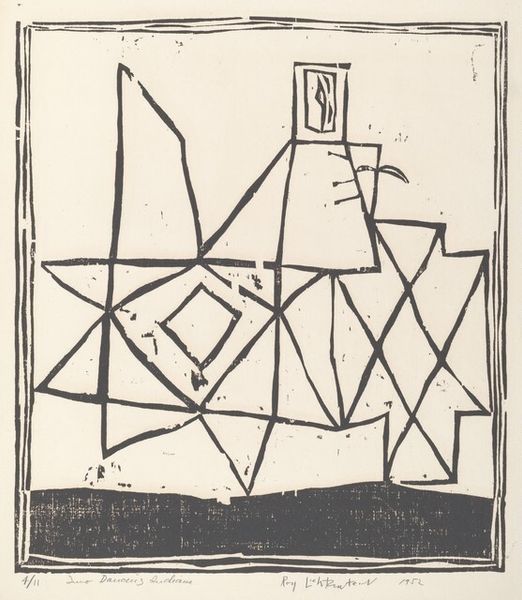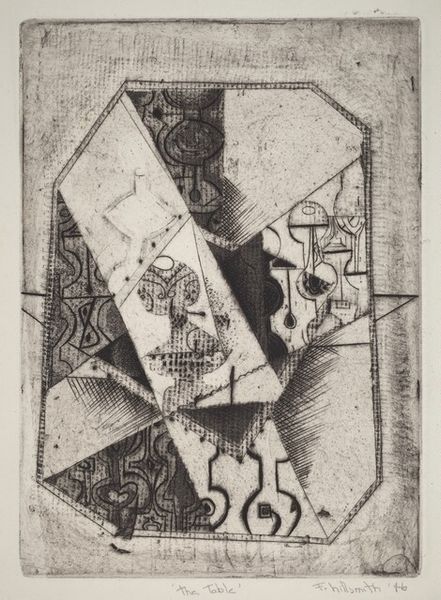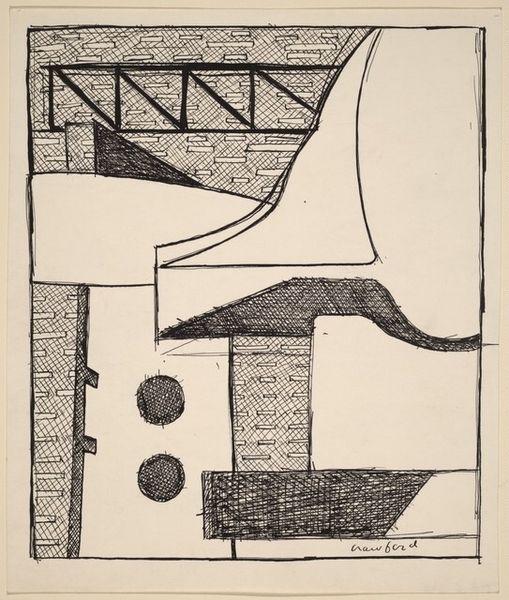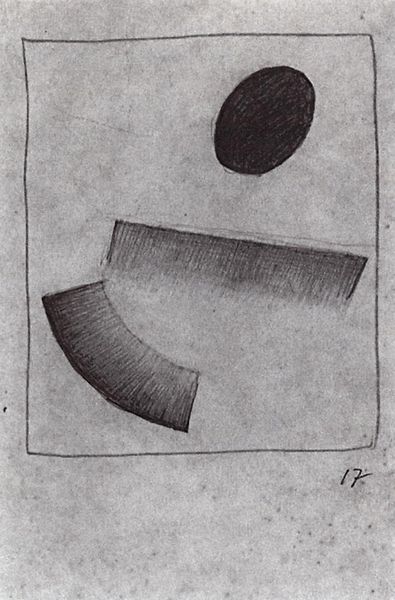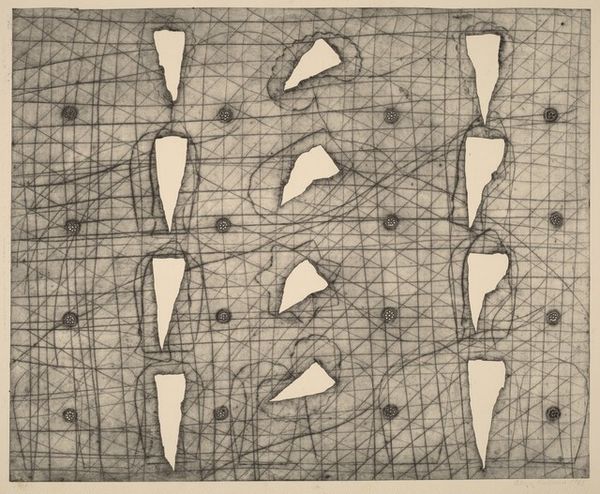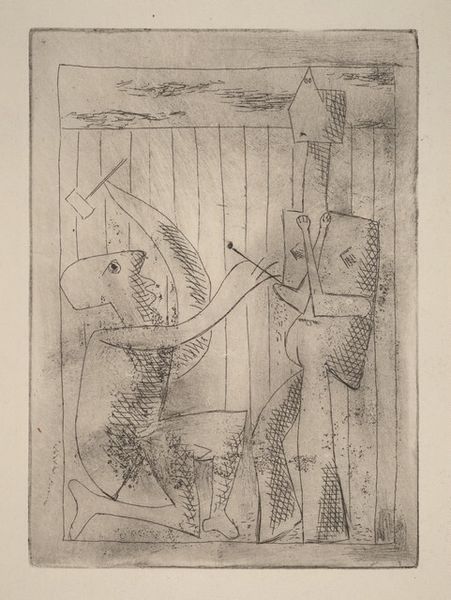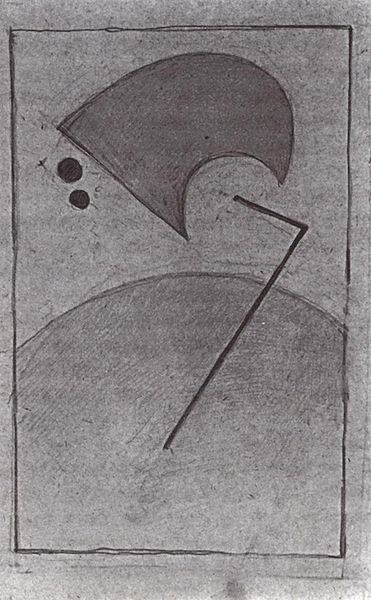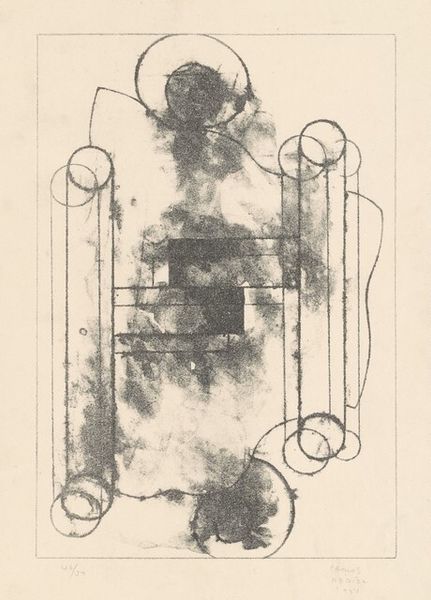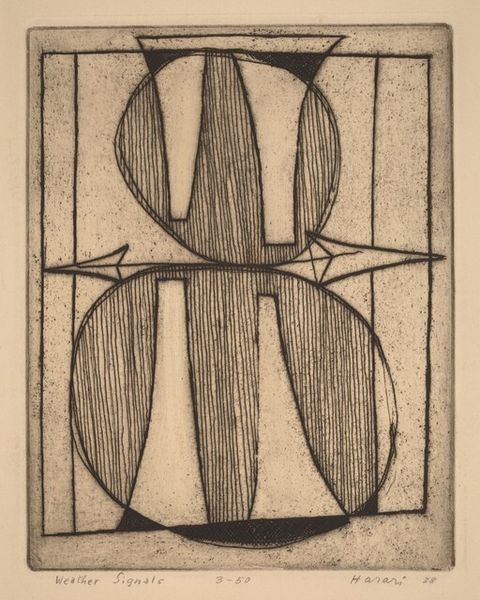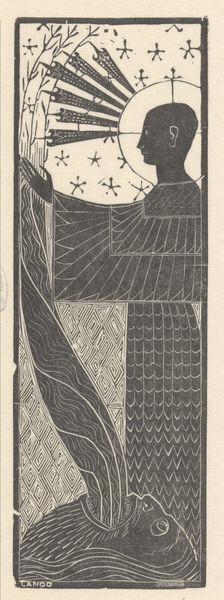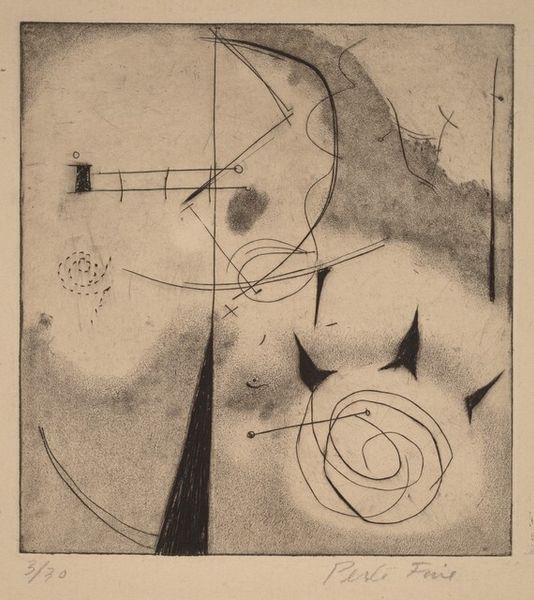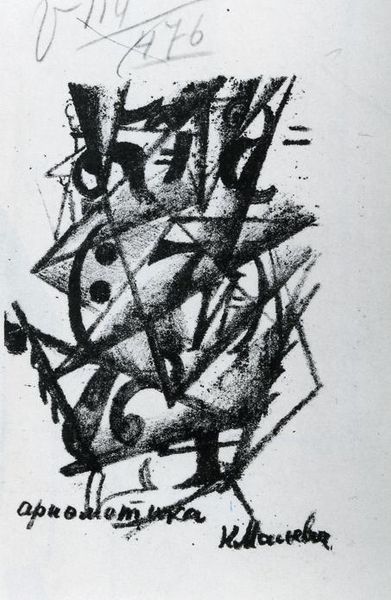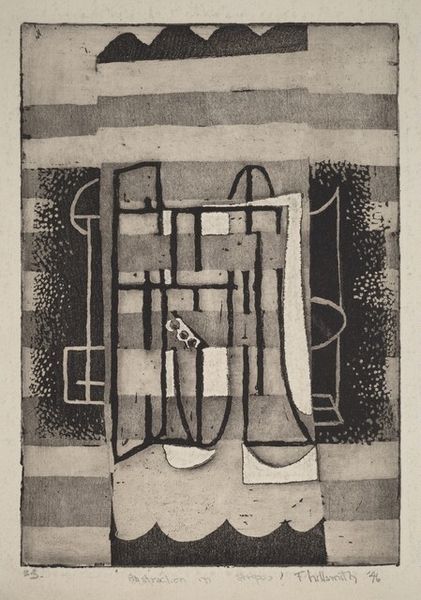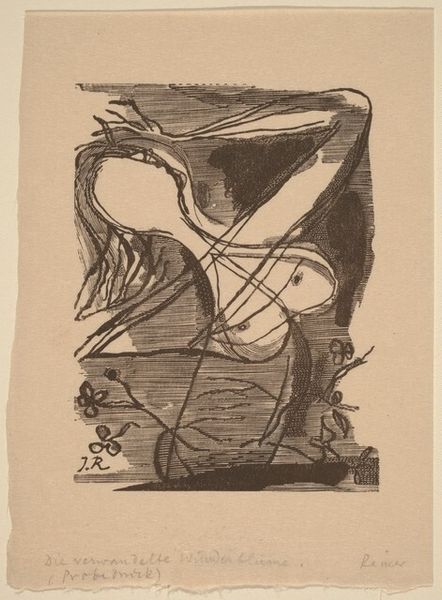
graphic-art, print, etching
#
graphic-art
# print
#
etching
#
geometric
#
abstraction
#
surrealism
#
modernism
Dimensions: plate: 124 x 98 mm sheet: 194 x 165 mm
Copyright: National Gallery of Art: CC0 1.0
Editor: Here we have Hananiah Harari's "Aeroscape" from 1938, an etching that at first glance feels like a dance between geometric order and something more organic, almost dreamlike. There's a real tension between the crisp lines and the textured washes. How would you interpret this work focusing solely on its intrinsic qualities? Curator: Note the stark contrasts achieved through the etching process. The composition reveals a rigorous arrangement of forms, doesn't it? Observe the squares attempting to contain circles, and how those shapes interact with the softer, cloud-like forms. The diagonal lines cut across the composition, creating dynamic vectors that lead the eye. How do these lines function within the overall structure? Editor: I see, the lines add movement but they also fragment the composition, almost like shattering the illusion of a defined space. It makes it hard to focus on one particular area. What about the tonal range? Is there significance in Harari's restricted palette? Curator: The restricted palette directs our attention to the modulation of tone and texture. Consider how the artist uses light and shadow to define the forms, creating depth and volume where there is only line and surface. This interplay between positive and negative space, black and white, becomes the language of the work itself. The gradations generate aerial perspective to represent an ‘Aeroscape’. Editor: That makes so much sense. I hadn't considered how much depth he creates with so little. It really reframes my understanding of abstraction as something deeply structured, rather than just arbitrary. Curator: Indeed. The artist demonstrates how the formal elements alone can create a compelling visual experience. A true demonstration of formalism at its best.
Comments
No comments
Be the first to comment and join the conversation on the ultimate creative platform.
